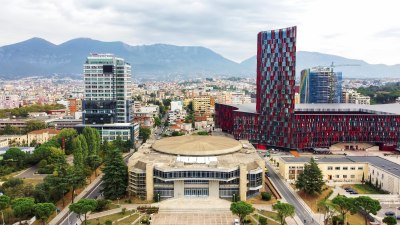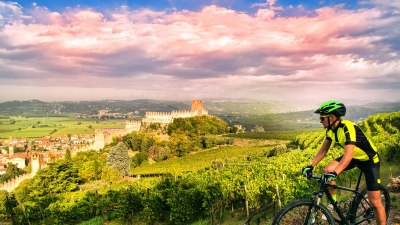Christ the Redeemer in Brazil Has Been Watching the Same City Dream
Explore the iconic Christ the Redeemer and its view over Rio de Janeiro's evolving dreams and landscapes.

Christ the Redeemer, an iconic symbol of Brazil and one of the New Seven Wonders of the World, is a sight that captures the essence of Rio de Janeiro. Situated atop the Corcovado Mountain, this colossal statue has stood watch over the city since 1931, observing transformations and dreams that have unfolded beneath its outstretched arms. This piece explores the rich history, cultural significance, and the dreams of the city that the statue has witnessed over the decades.
Originally conceived in the early 20th century, the statue was intended to reinforce Christianity in a predominantly Catholic country and provide a sense of unity among the people. It was designed by French sculptor Paul Landowski and constructed by Brazilian engineer Heitor da Silva Costa. The project, which was a result of decades of discussions, finally culminated in the grand unveiling in 1931. Christ the Redeemer quickly became synonymous with faith, hope, and love for the people of Brazil.
Standing at 30 meters tall, excluding the 8-meter pedestal, and weighing approximately 1,145 tons, the statue is an engineering marvel. Made of reinforced concrete and soapstone, the statue has withstood the test of time and natural elements, continuing to be a remarkable sight for tourists and locals alike. Its panoramic views of Rio de Janeiro only add to its allure. From the majestic Sugarloaf Mountain to the sprawling beaches of Copacabana and Ipanema, the perspective from the statue captures the city’s vibrant energy.
Over the decades, the surroundings of Christ the Redeemer have changed dramatically. In the 1930s, the neighborhood of Santa Teresa was the heart of cultural life in Rio. Artists, musicians, and intellectuals flocked to this area, drawn by its bohemian spirit. The view from the statue during this time reflected the burgeoning creativity and vitality of the city. However, as decades passed, the landscape evolved. The rapid urbanization post-World War II brought new challenges, including favelas (informal settlements), which grew around the mountainous regions of the city.
Despite the changes, the statue remained a steadfast symbol of resilience. The residents of the favelas, often marginalized and overlooked, have their dreams and struggles watched over by Christ the Redeemer. The community's vibrant culture, music, and art serve as a testament to the human spirit’s capacity to persevere irrespective of adversity. Events such as the famous Carnival celebration highlight this culture as they transform Rio into a liveliness of rhythm and colour every year.
As Brazil entered the 21st century, the interplay between tradition and modernization began to take shape. The statue’s platform became a favored spot for special events, including religious ceremonies and cultural festivals that showcased local talent. Instances such as the 'Christ the Redeemer Light Show', where the statue is illuminated in various colors to celebrate different themes, have connected the local and global community in a modern yet respectful manner.
The city then faced new challenges marked by political scandals, economic turmoil, and social unrest, particularly in the 2010s. However, the unwavering presence of Christ the Redeemer became a beacon of hope and unity for citizens. During challenging times, residents of Rio would often engage in community activities and protests, drawing inspiration from the statue's message of love and acceptance, urging the city to embrace change and hope for a better future.
The environment surrounding Christ the Redeemer also faced scrutiny as global warming began to manifest a more significant impact on urban areas. Renowned for its rich biodiversity, the Tijuca Forest, which encircles the statue, has increasingly become a focal point in discussions surrounding conservation and sustainability. As air quality deteriorates and climate change progresses, initiatives to protect this thriving ecosystem have increased, with Christ the Redeemer standing as a symbol for sustainability and environmental preservation.
In recent years, Christ the Redeemer has become a popular site for social media posts, underscoring the digital age's influence on perception and tourism. Visitors from around the globe capture the breathtaking views, sharing images and stories that promote cultural exchange and tourism. However, it also poses a challenge to preserve the sanctity of the site while accommodating the growing number of tourists eager to experience the magic of Rio through its iconic statue.
The evolving dreams of Rio de Janeiro, witnessed by Christ the Redeemer, pens a story of resilience, diversity, and ongoing transformation. From the fervour of the artistic movements in the 1930s to the contemporary struggles faced by various communities, the statue remains a reflective observer of change. It embodies the city's essence, merging spirituality, culture, and the human element into a singular vision of hope and unity.
As we continue to explore the dreams of Rio de Janeiro, Christ the Redeemer remains an integral part of the narrative. The statue kindly invites us to reflect on our aspirations while serving as a reminder of the interconnectedness of all communities within the city. It stands not only as a religious figure but as a global icon of harmony and a powerful symbol that is ever-watchful and endlessly inspiring.
In conclusion, Christ the Redeemer in Brazil indeed has been watching the same city dream for over nine decades. The evolving landscapes, cultural shifts, and communal narratives paint a tapestry of life in Rio de Janeiro, rich in history and deeply intertwined with the spirit of humanity.











